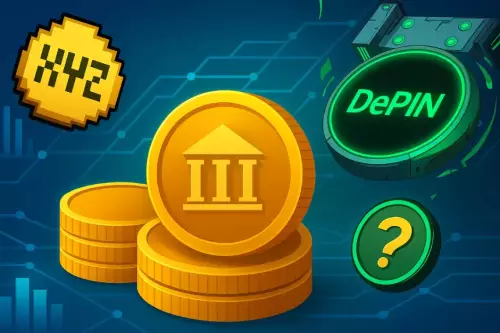 |
|
 |
|
 |
|
 |
|
 |
|
 |
|
 |
|
 |
|
 |
|
 |
|
 |
|
 |
|
 |
|
 |
|
 |
|
Cryptocurrency News Articles
Bitcoin, Stablecoins, and Japan: A New Era of Digital Finance
Aug 24, 2025 at 09:41 am
Japan is emerging as a key player in the digital finance space, particularly with its evolving stablecoin framework and strategic partnerships.

Japan is quietly revolutionizing its financial landscape, emerging as a beacon of clarity amid global digital innovation and regulatory uncertainty. With evolving stablecoin frameworks and strategic partnerships, particularly between Ripple and SBI Holdings, Japan presents a compelling case for early institutional exposure in a market poised for exponential growth.
Regulatory Tailwinds: A Framework for Innovation
Japan's 2025 Amendment Act to the Payment Services Act (PSA) has redefined the stablecoin landscape. By introducing the “Electronic Payment Instrument and Crypto-asset Intermediary Service Business Operator” (ECISBO) category, the Financial Services Agency (FSA) has created a tailored regulatory environment for stablecoin intermediaries. This framework aligns with anti-money laundering (AML) and counter-terrorist financing (CFT) protocols while avoiding the onerous capital requirements of traditional financial institutions.
The FSA's approach balances innovation with stability by mandating 100% reserve backing and licensing for distribution, setting a global benchmark. This regulatory clarity attracts institutional players seeking to avoid volatility and legal ambiguity.
RLUSD: A First-Mover Advantage
Ripple and SBI's collaboration on RLUSD exemplifies the strategic alignment of technology and regulatory access. This stablecoin is fully collateralized by U.S. dollar deposits and short-term Treasuries, audited monthly by independent third parties. Its dual-chain functionality (XRP Ledger and Ethereum) ensures interoperability across traditional and decentralized finance.
SBI VC Trade, the licensed distribution partner, holds a unique position in Japan's financial infrastructure, leveraging decades of institutional trust and regulatory expertise. The August 2025 announcement of a Q1 2026 launch underscores a calculated approach to market entry, timed with Japan's broader digital finance ambitions.
Market Dynamics: Growth Projections
Japan's stablecoin market is projected to expand from $2.0 billion in 2025 to $3.7 trillion by 2030, driven by institutional demand for alternative liquidity tools. RLUSD's role in facilitating cross-border payments and institutional settlements positions it as a critical player in this growth.
Bitcoin's Sideways Movement and Altcoin Implications
While stablecoins gain traction, Bitcoin (BTC) has seen sideways movements, with analysts like Ted from OKX noting a CME gap around $117,000. This gap signals potential price declines for BTC but suggests rallies for altcoins like Ethereum (ETH) and XRP. Matrixport has even been spotted exchanging Ethereum for Bitcoin, anticipating a potential BTC rally.
Investment Implications
For investors, the RLUSD-SBI partnership represents a convergence of regulatory alignment, institutional credibility, and scalable utility. Early exposure to Japan's regulated stablecoin market offers regulatory arbitrage and access to institutional demand. However, risks remain, hinging on sustained regulatory support and the ability to scale without compromising transparency.
Conclusion: A Bridge to the Future
RLUSD is more than a stablecoin; it is a bridge between traditional and decentralized finance. By leveraging Japan's regulatory clarity and institutional infrastructure, Ripple and SBI address the core challenges of digital finance: trust, compliance, and scalability. Japan, with RLUSD at its center, is building a framework that will resonate far beyond its borders. So, buckle up, because the future of money just got a whole lot more interesting, and it's all happening in Japan!
Disclaimer:info@kdj.com
The information provided is not trading advice. kdj.com does not assume any responsibility for any investments made based on the information provided in this article. Cryptocurrencies are highly volatile and it is highly recommended that you invest with caution after thorough research!
If you believe that the content used on this website infringes your copyright, please contact us immediately (info@kdj.com) and we will delete it promptly.






























































